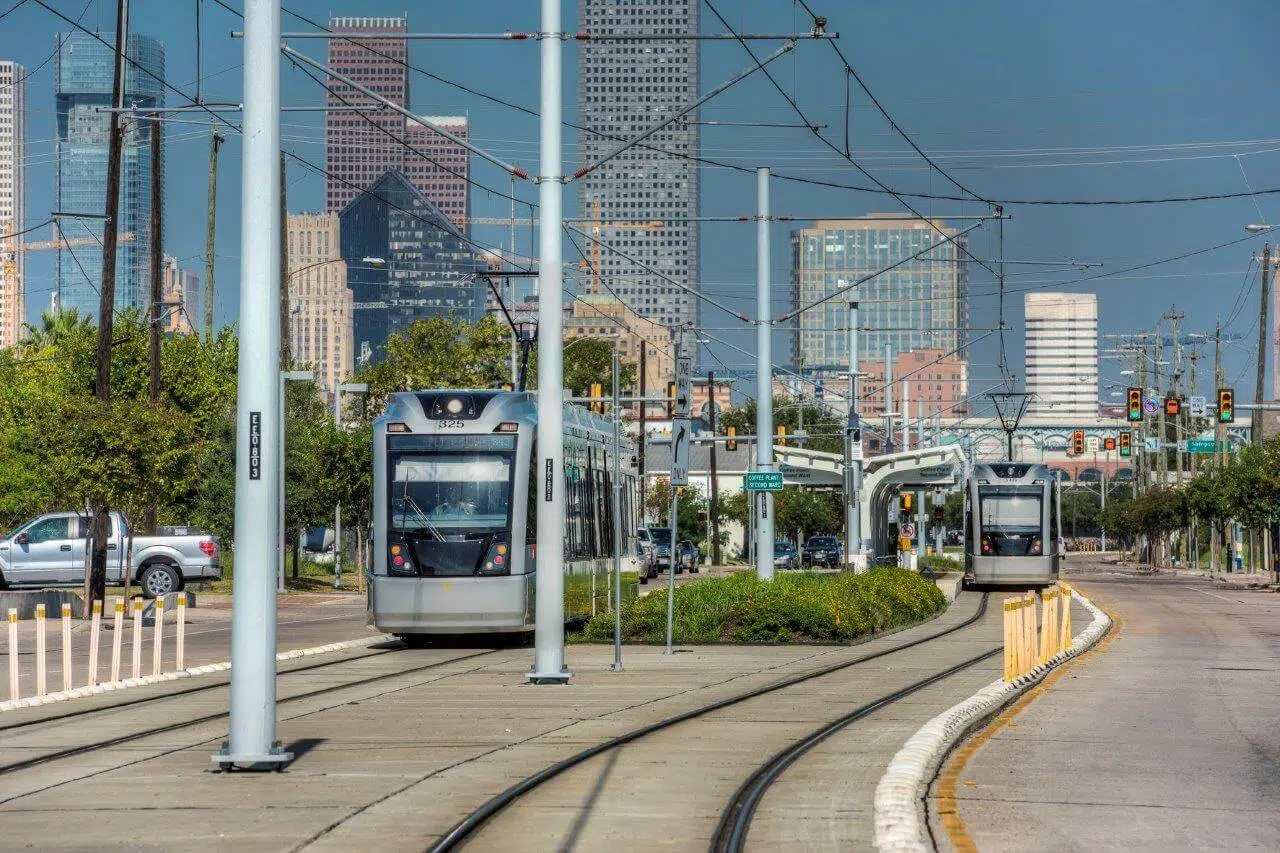- May 19, 2020
- COVID-19, Perspectives
Riding Out the “New Normal”: Reviving the Transit Industry Post-COVID-19


Ashley Lickliter, PE
Transit Specialist
To Ride or Not to Ride... That Is the Question
As shelter-in-place orders expire across the country, the question on everyone’s mind is how do we go back to business as usual? Is there such a thing, or are we witnessing the beginning of the “new normal” for businesses in all industries, including those in transportation and transit?
Many people have adapted to their current situation and may be reluctant to return to commuting on public transit, especially amidst individual re-opening dates and varying local guidance. In addition, transit systems in some metropolitan areas—including our nation’s capital—run through multiple states where restrictions may vary.
As we continue navigating unknown circumstances and new norms, we are simultaneously watching transit systems demonstrate their efficacy and ability to deliver essential service in the most difficult of times.

Going the Distance
In the face of such wide-spread uncertainty, what is also emerging is a collective consciousness around shared resources, outreach, and compassion. Acknowledging that public transportation accounts for the predominance of daily travel for citizens in many major U.S. cities, transit systems have continued to provide a vital resource for communities, ensuring access to grocery stores and employment and mobility for healthcare workers and first responders.
With an eye on protecting the public, transit agencies have responded to the need for increased health and hygiene practices by implementing measures such as free fares, blocked seats to enforce physical distancing, rear-door boarding on buses, and increased fleet cleaning and sanitation.
Transit and transportation agencies are also going above and beyond their core services with creative partnerships and reimagined technology.
- The Greater Richmond Transit Company has partnered with local Reservoir Distillery to provide free hand sanitizer to their employees on the front lines.
- Pierce Transit in Lakewood, WA has allocated two buses to act as mobile Wi-Fi hot spots for students attending school remotely who do not have access to home internet.
- The Jacksonville Transportation Authority, Beep Inc., and NAVYA have joined forces with the Mayo Clinic to deploy autonomous vehicles that deliver COVID-19 tests and medical supplies to their Jacksonville location.
- Via and the Washington, D.C. Department of For-Hire Vehicles have launched an on-demand service that repurposes D.C. Neighborhood Connect (a former microtransit system) to provide rides to essential healthcare workers at Howard University Hospital and United Medical Center after 9:00 PM.
These are just a few examples of how transportation plays a key role as we battle this pandemic and they remind us that we’re all in this together, a mantra that has rallied us as a global community.
Funding Transit's Future
As people are working from home, using delivery apps for groceries, and avoiding the usual weekend activities, transit ridership has plummeted nationwide. LA Metro predicts by Fall 2020, they will experience a loss of over $800 million in sales tax and $300 million in farebox revenue. They have already seen a 70-80% drop in ridership and have decreased transportation service by 20-25% based on shifts in traffic patterns. Washington Metropolitan Area Transit Authority (WMATA) reports that rail ridership is down about 94% and bus ridership is down 76%. In Minneapolis, Metro Transit ridership is down over 75% on buses, 85% on rail, and 95% on express routes.
As President Trump encourages the country to re-open, where does that leave industries, such as transit, that are currently operating under a deficit? The CARES Act includes $25 billion in grants to help transit agencies prevent, prepare for, and respond to COVID-19. These relief funds help the transit industry maintain increased sanitation standards, support customers experiencing economic hardship, avert layoffs, and develop a plan for future re-stabilization.
Some existing funds can be repurposed as well, such as the Emergency Relief Program. In states where the Governor has declared a State of Emergency, transit systems serving metropolitan areas can seek up to 100% federal reimbursement for funds used for emergency-related capital and operating costs that help to secure public health and safety such as:
- System operating expenses
- Protective equipment for employees
- Cleaning/sanitizing rolling stock, equipment, and facilities
- Hand sanitizers for high-traffic areas
In a time where jobs are desperately needed, investing in infrastructure projects will create valuable employment opportunities while increasing the effectiveness of daily transportation operations. During a recent interview with Transportation Radio, Paul Skoutelas, President and CEO of the American Public Transportation Association (APTA), advocated government funding for infrastructure, citing economist data that “for every $1 spent, there is a $5 return on investment,” returning billions of dollars back into the economy.
In a time where jobs are desperately needed, investing in infrastructure projects will create valuable employment opportunities while increasing the effectiveness of daily transportation operations.
Ashley Lickliter, PE Tweet
The "New Normal" Post-COVID-19
Looking ahead, customers will need to regain confidence that transit systems are safe to return to. In addition to keeping the public informed about what to expect, transit authorities will need to continue vigilant and preventative sanitation standards such as encouraging operators and travelers to wear face coverings.
As customer demand increases, transit providers will need to continue social distancing measures such as maintaining rear-door boarding on buses, seat blocking, and tape markings at passenger loading zones to continue flattening the curve.
Another consideration will be accounting for the return of fare collection. Digital ticketing systems offer valuable data for operators to provide up-to-date alerts regarding crowded platforms and emergency info to customers. One such app is Pick by Ubirider, which offers an elevated customer experience—a must for reviving the transportation industry and enticing customers back to transit systems. Says Paulo Ferreira dos Santos, CEO and Developer of the app, “Those transit agencies and operators who can harness real-time data and use it to guide their operations will be able to successfully navigate this crisis and attract ridership.” Since not everyone has a smart phone, agencies should also provide updates on platforms accessible to all systems users.
APTA is launching plans to reposition public transportation and support its recovery with initiatives like the APTA Mobility Recovery and Restoration Task Force focused on rethinking mobility in the aftermath of COVID-19. The task force is led by LA Metro CEO, Phillip A. Washington, with support from Joanna M. Pinkerton, President/CEO of Central Ohio Transit Authority and Paul Wiedefeld, General Manager and CEO of WMATA.
Raising the Bar
While we don’t have all the answers right now, we are confident transit providers will continue to respond to the needs of our communities with agility, preparedness, and a sense of urgency. Undoubtedly, transportation will remain front and center, leading crucial efforts to boost our economy and get us all moving again. Initiatives around the nation will assert a collective way of providing peace of mind to the public and creating infrastructure that raises the bar on what we have come to expect from this vital resource. We can look forward to more updates, increased planning, and phased rollouts of transit programs in the weeks ahead. Is this the “new normal?” Stay tuned…
About the Authors

Ashley Lickliter, PE
Ashley Lickliter, PE, has 19 years of experience specializing in bus rapid transit (BRT), transit planning and design, transportation engineering, traffic engineering, and intelligent transportation system/advanced traffic management system (ITS/ATMS) design. Ashley has supported more than 20 BRT projects nationwide and served as project manager on the GRTC Pulse BRT project in Richmond, VA, which won an America Transportation Award. Ashley was selected as a member of the Leadership APTA Class of 2020 and recognized as one of ENR’s 2019 National 20 Under 40 for her outstanding contributions to the transportation industry.
